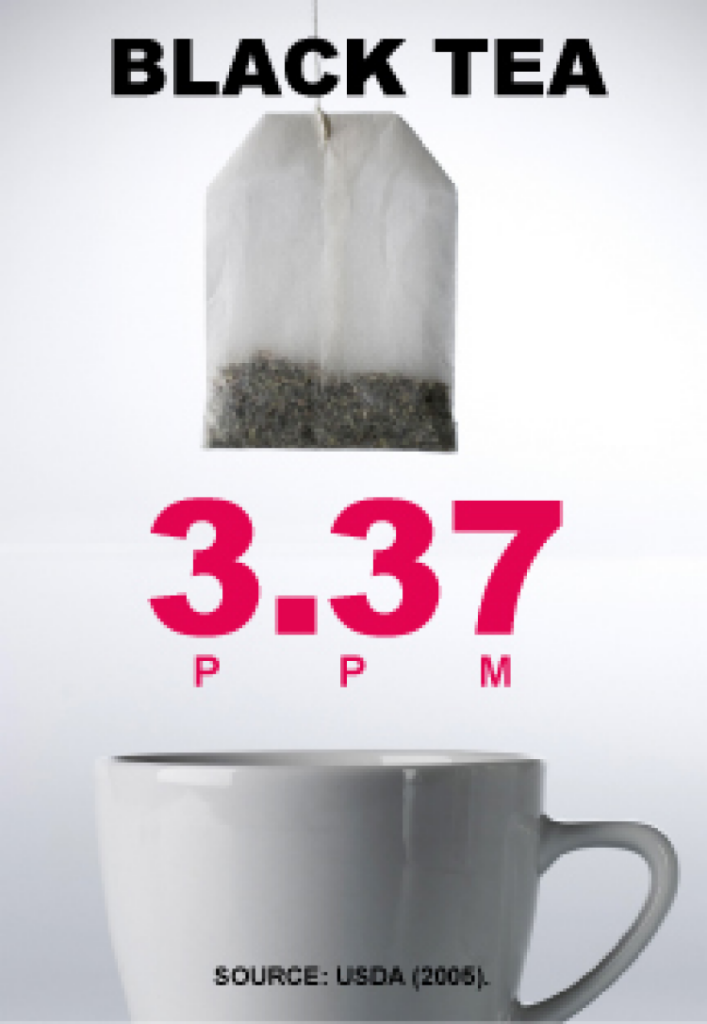Risk of Fluoride Toxicity
Tea plants readily absorb fluoride from soil. As a result, tea drinks invariably contain high levels of fluoride. In the United States, brewed black tea averages about 3 to 4 parts ppm fluoride, while commercial iced tea drinks contain between 1 and 4 ppm. (Izuora 2011; Whyte 2006; USDA 2005). Excessive consumption of tea beverages thus creates a risk for fluoride toxicity.
[Tea Image]
In recent years the United States, there have been several a number of reports documenting skeletal fluorosis in the United States among heavy tea drinkers. Dr. Michael Whyte, who has authored several of these studies, cautions that “many” tea drinkers are currently receiving fluoride doses that put them at risk for skeletal fluorosis. (Whyte 2008). In Whyte’s studies, the tea drinkers who developed skeletal fluorosis had been misdiagnosed for years as suffering from arthritis and/or fibromylagia. In Whyte’s most recent study, a Georgia woman had crippling skeletal fluorosis for up to 18 years before being correctly diagnosed. (Whyte 2011). As some authors have noted, “it is certain that some heavy-tea drinkers suffering from fluorosis from tea-drinking might not be diagnosed.” (Yi & Cao 2008).

Benefits of Drinking Tea
While the fluoride levels in tea are high, it is important to also consider that tea leaves contain a natural antidote to fluoride toxicity: namely, anti-oxidants. In particular, tea contains high levels of “polyphenols” which are effective at countering oxidative stress in the body. Since oxidative stress is believed to be a key mechanism by which fluoride damages cells in the body, the high levels of anti-oxidants in some teas can help to mitigate the impact of the high fluoride levels.
Higher Quality Teas Contain Lower Levels of Fluoride
Unfortunately, the tea products that contain the highest levels of fluoride also happen to contain the least anti-oxidants. This is because the level of anti-oxidant level in tea is lowest in old leaves (when fluoride content is at its highest), and highest in young leaves (when fluoride content is at its lowest). The fluoride content of tea has thus been proposed as an indicator of its quality: the more fluoride, the lower the anti-oxidants, and thus the lower the quality.
How to Minimize Your Risk
To minimize your risk of fluoride toxicity from tea, it is best to drink tea drinks such as “white tea” that are made from young leaves. Since white tea provides more anti-oxidant protection and less fluoride than older teas it will reduce the risk (albeit not eliminate it) of developing fluoride toxicity. While this does not necessarily foreclose the risk of fluoride toxicity, it will reduce it vis-a-vis the fluoride risk from older, lower quality teas.
Another way of reducing fluoride intake from tea is to switch to yerba matte, a South American tea drink that has been found to contain minimal levels of fluoride.
